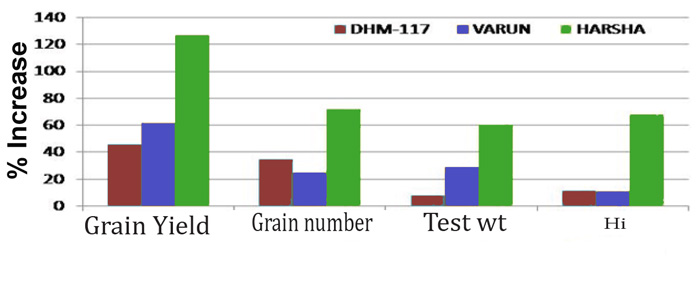| Tweet | Follow @co2science |
Paper Reviewed
Vanaja, M., Maheswari, M., Jyothi Lakshmi, N., Sathish, P., Yadav, S.K., Salini, K., Vagheera, P., Vijay Kumar, G. and Abdul, R. 2015. Variability in growth and yield response of maize genotypes at elevated CO2 concentration. Advances in Plants & Agriculture Research 2(2):00042.
Vanaja et al. (2015) recently had a paper published wherein they describe the growth and yield responses of three different maize (Zea mays L.) genotypes -- DHM-117 (a single cross hybrid), Varun (synthetic) and Harsha (composite) -- when exposed to ambient air containing 390 ppm of CO2 or enriched air containing 550 ppm of CO2. And what did they thereby learn?
As illustrated in the figure below, the nine Indian researchers report that (1) "the improved grain yield due to 550 ppm CO2 was 46% in DHM-117, 61% in Varun and 127% in Harsha as compared with the ambient control," that (2) "the improvement in grain yield was contributed by both increased grain number to the extent of 34%, 25% and 72% as well as enhanced test weight by 8%, 29% and 60% in DHM-117, Varun and Harsha respectively," and that (3) "elevated CO2 also significantly improved the harvest index [Hi] of maize genotypes to the extent of 11% (DHM-117 and Varun) to 68% (Harsha)."

The impact of a 160 ppm increase in CO2 (550 ppm) on various growth and yield parameters of three maize genotypes (DHM-117, Varun and Harsha). Adapted from Vanaja et al. (2015)
As a result of these observations, Vanaja et al. concluded -- in the final sentence of their paper -- that "the positive and significant response of elevated CO2 on maize harvest index was due to higher partitioning of biomass towards reproductive parts rather than vegetative parts," leading them to further conclude that this response "makes this crop more climate resilient."
Posted 29 December 2015



